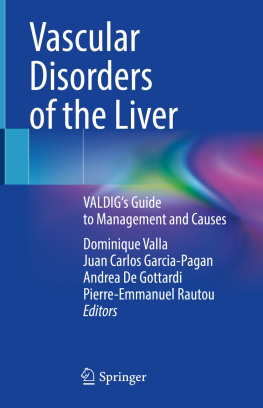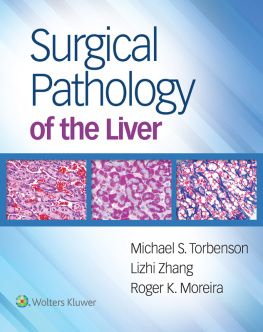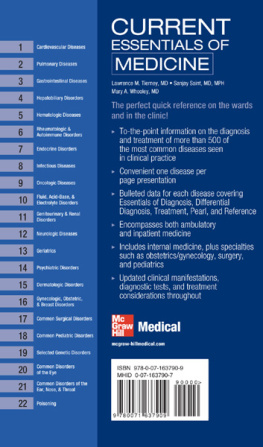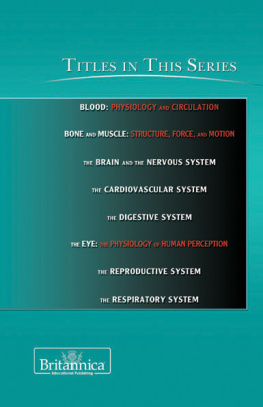Table of Contents
List of tables
- Tables in Chapter 1
- Tables in Chapter 2
- Tables in Chapter 3
- Tables in Chapter 4
- Tables in Chapter 5
- Tables in Chapter 6
- Tables in Chapter 7
- Tables in Chapter 8
- Tables in Chapter 9
- Tables in Chapter 10
- Tables in Chapter 11
- Tables in Chapter 12
- Tables in Chapter 13
- Tables in Chapter 14
- Tables in Chapter 15
- Tables in Chapter 16
- Tables in Chapter 17
- Tables in Chapter 18
- Tables in Chapter 19
- Tables in Chapter 20
- Tables in Chapter 21
- Tables in Chapter 22
- Tables in Chapter 23
- Tables in Chapter 24
- Tables in Chapter 25
- Tables in Chapter 26
- Tables in Chapter 27
- Tables in Chapter 28
List of figures
- Figures in Chapter 1
- Figures in Chapter 2
- Figures in Chapter 3
- Figures in Chapter 4
- Figures in Chapter 5
- Figures in Chapter 6
- Figures in Chapter 7
- Figures in Chapter 8
- Figures in Chapter 9
- Figures in Chapter 10
- Figures in Chapter 11
- Figures in Chapter 12
- Figures in Chapter 13
- Figures in Chapter 14
- Figures in Chapter 15
- Figures in Chapter 16
- Figures in Chapter 17
- Figures in Chapter 18
- Figures in Chapter 19
- Figures in Chapter 20
- Figures in Chapter 21
- Figures in Chapter 22
- Figures in Chapter 23
- Figures in Chapter 24
- Figures in Chapter 25
- Figures in Chapter 26
- Figures in Chapter 27
- Figures in Chapter 28
- Figures in Chapter 29
Landmarks
Acknowledgments
First and foremost we wish to express our respects and deep gratitude to the late Dr. Nelson Fausto for having been the coeditor of the last two editions of this book. Many of his words are retained in this edition and will continue to benefit future readers. He shall be greatly missed.
All three of us offer thanks to our contributing authors for their commitment to this textbook. Many are veterans of previous editions; others are new to the ninth edition. All are acknowledged in the table of contents. Their names lend authority to this book, for which we are grateful. As in previous editions, the three of us have chosen not to add our own names to the chapters we have been responsible for writing, in part or whole.
Many colleagues have enhanced the text by reading various chapters and providing helpful critiques in their area of expertise. They include Drs. Seungmin Hwang, Kay McLeod, Megan McNerney, Ivan Moskovitz, Jeremy Segal, Humaira Syed, Helen Te, and Shu-Yuan Xiao at the University of Chicago; Marcus Peter at Northwestern University, Chicago; Dr Meenakshi Jolly at Rush University, Chicago; Drs. Kimberley Evason, Kuang-Yu Jen, Richard Jordan, Marta Margeta, and Zoltan Laszik at the University of California, San Francisco; Dr. Antony Rosen at Johns Hopkins University; Dr. Lundy Braun at Brown University; Dr. Peter Byers at the University of Washington; Drs. Frank Bunn, Glenn Dranoff, and John Luckey at Harvard Medical School; Dr. Richard H. Aster at the Milwaukee Blood Center and Medical College of Wisconsin; and Dr. Richard C. Aster at Colorado State University. Special thanks are due to Dr. Raminder Kumar for updating clinical information and extensive proofreading of many chapters in addition to her role as consulting clinical editor for several chapters. Many colleagues provided photographic gems from their collections. They are individually acknowledged in the text.
Our administrative staff needs special mention since they maintain order in the chaotic lives of the authors and have willingly chipped in when needed for multiple tasks relating to the text. At the University of Chicago, they include Ms. Nhu Trinh and Ms. Garcia Wilson; at the University of California at San Francisco, Ms. Ana Narvaez; and at the Brigham and Women's Hospital, Muriel Goutas. All of the graphic art in this book was created by Mr. James Perkins, Professor of Medical Illustration at Rochester Institute of Technology. His ability to convert complex ideas into simple and aesthetically pleasing sketches has considerably enhanced this book.
Many individuals associated with our publisher, Elsevier (under the imprint of WB Saunders), need our special thanks. Outstanding among them is Jennifer Nemec, Project Manager, and our partner in the production of this book. Her understanding of the needs of the authors, promptness in responding to requests (both reasonable and unreasonable), and cheerful demeanor went a long way in reducing our stress and making our lives less complicated. Mr. William (Bill) Schmitt, Publishing Director of Medical Textbooks, has always been our cheerleader and is now a dear friend. Our thanks also go to Managing Editor Rebecca Gruliow and Design Manager Lou Forgione at Elsevier. Undoubtedly there are many others who may have been left out unwittinglyto them we say thank you and tender apologies for not acknowledging you individually.
Efforts of this magnitude take a toll on the families of the authors. We thank our spouses, Raminder Kumar, Ann Abbas, and Erin Malone for their patience, love, and support of this venture, and for their tolerance of our absences.
Vinay Kumar
Abul K. Abbas
Jon C. Aster
Chapter 1
The Cell as a Unit of Health and Disease
Richard N. Mitchell
Chapter Contents
See TARGETED THERAPY available online at www.studentconsult.com 
Pathology literally translates to the study of suffering (Greek pathos = suffering, logos = study); more prosaically, the term pathology is invoked to represent the study of disease. Germane to this opening chapter, Virchow coined the term cellular pathology to emphasize the basic tenet that all diseases originate at the cellular level. Thus, modern pathology is basically the study of cellular abnormalities. Therefore, diseases and the underlying mechanisms are best understood in the context of normal cellular structure and function.
It is unrealistic (and even undesirable) to condense the vast and fascinating field of cell biology into a single chapter. Moreover, students of biology are likely quite familiar with many of the broader concepts of cell structure and function. Consequently, rather than attempting a comprehensive review, our goal is to survey some basic principles and highlight some recent advances that are relevant to the pathologic basis of disease that is emphasized throughout the text. We hope this chapter will be useful to review key topics in normal cell biology as they apply to the areas of Pathology that are covered from onwards.
The Genome
The sequencing of the human genome represented a landmark achievement of biomedical science. Published in draft form in 2001 and more completely detailed in 2003, the information has already led to remarkable advances in science and medicine. Since then there has been an exponential decrease in the cost of sequencing and an exponential increase in data accrual; this new information, now literally at our fingertips, promises to revolutionize our understanding of health and disease. However, the sheer volume of the data is formidable, and there is a dawning realization that we have only begun to scratch the surface of its complexity; uncovering the relevance to disease and then developing new therapies remain challenges that both excite and inspire scientists and the lay public alike.
Noncoding DNA
The human genome contains roughly 3.2 billion DNA base pairs. Within the genome there are about 20,000 protein-encoding genes, comprising only about 1.5% of the genome. These proteins variously function as enzymes, structural components, and signaling molecules and are used to assemble and maintain all of the cells in the body. Although 20,000 is an underestimation of the number of proteins encoded in the human genome (given that many genes produce multiple RNA transcripts encoding different protein isoforms), it is nevertheless startling to realize that worms composed of fewer than 1000 cellswith genomes of only about 0.1 billion DNA base pairsare also assembled using about 20,000 genes to produce proteins. Even more surprising is that many of these proteins are recognizable homologs of molecules expressed in humans. What then separates humans from worms?






